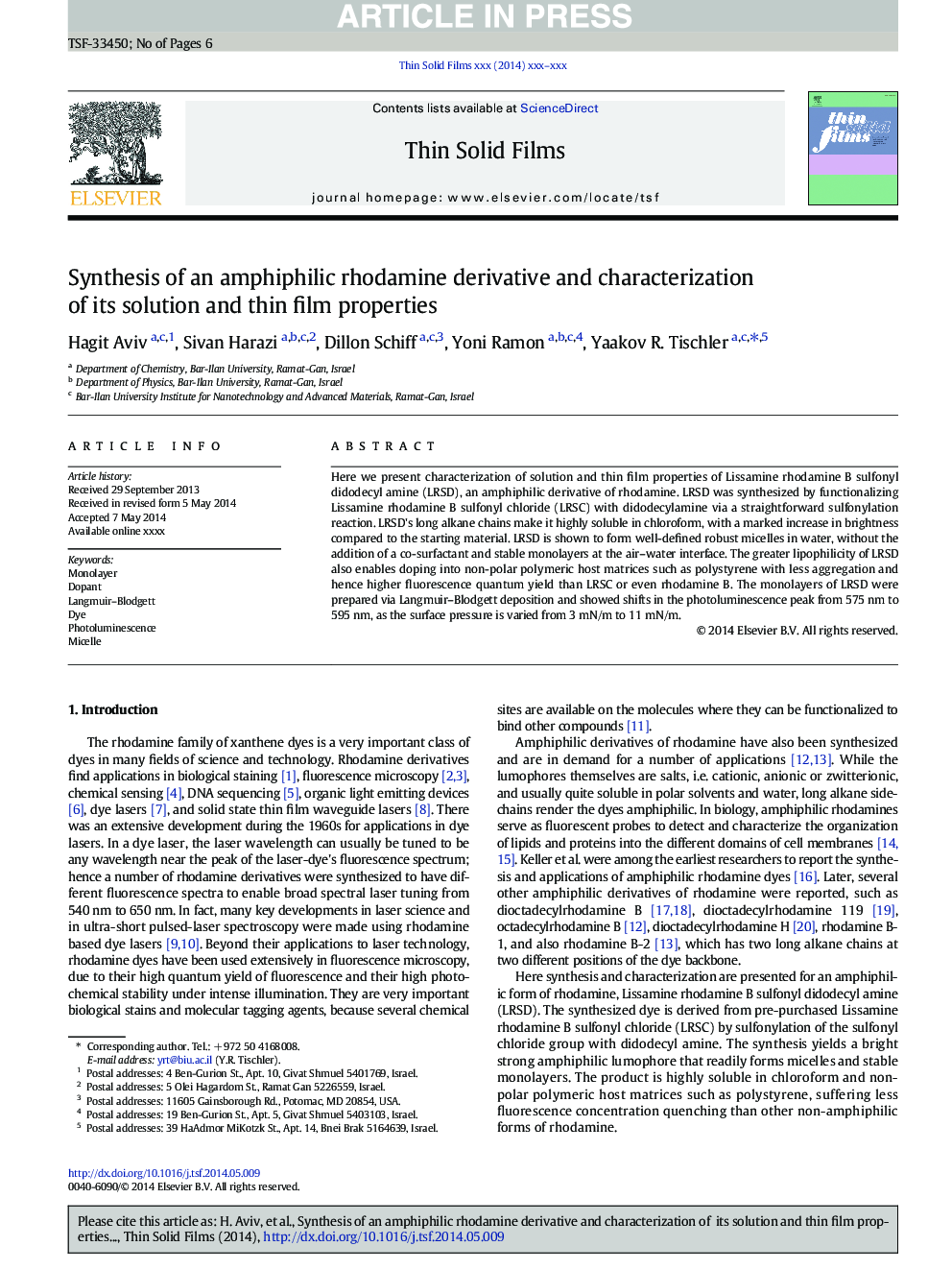| Article ID | Journal | Published Year | Pages | File Type |
|---|---|---|---|---|
| 8034950 | Thin Solid Films | 2014 | 6 Pages |
Abstract
Here we present characterization of solution and thin film properties of Lissamine rhodamine B sulfonyl didodecyl amine (LRSD), an amphiphilic derivative of rhodamine. LRSD was synthesized by functionalizing Lissamine rhodamine B sulfonyl chloride (LRSC) with didodecylamine via a straightforward sulfonylation reaction. LRSD's long alkane chains make it highly soluble in chloroform, with a marked increase in brightness compared to the starting material. LRSD is shown to form well-defined robust micelles in water, without the addition of a co-surfactant and stable monolayers at the air-water interface. The greater lipophilicity of LRSD also enables doping into non-polar polymeric host matrices such as polystyrene with less aggregation and hence higher fluorescence quantum yield than LRSC or even rhodamine B. The monolayers of LRSD were prepared via Langmuir-Blodgett deposition and showed shifts in the photoluminescence peak from 575Â nm to 595Â nm, as the surface pressure is varied from 3Â mN/m to 11Â mN/m.
Related Topics
Physical Sciences and Engineering
Materials Science
Nanotechnology
Authors
Hagit Aviv, Sivan Harazi, Dillon Schiff, Yoni Ramon, Yaakov R. Tischler,
